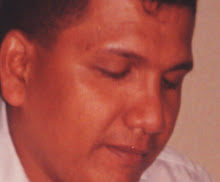TRANSNATIONAL ORGANIZED CRIME (TOC) & POPULATION MOVEMENTS
Organized Crime
nTraditionally known as “mafia”
nInvolved murder, extortion, gambling etc. (domestic and law order problem
nLarge scale criminality, operated by big organizations (with complex hierarchies) (Ryan: 1995)
nAssociated with one ethnic group (Chinese Triads & Tongs-”bamboo network”; Japanese Yakuza; Colombian Drug Cartels; Nigerian Gangs) etc.
nMotives of their activities: economic rather than political (unlike terrorist organizations)
nNow, OC- beyond mafia (global mafia)
nNo longer operates autonomously
nDepends on others for supply and distribution of illegal goods, money laundering and share personnel and resources
nAlthough some still-ethnically homogeneous but now form criminal partnerships
nWork
¨-cross border/transnational (thus known as TOC) (eg.: Colombian gangs in the US, Nigerian gangs in SE Asia) (Shelley: 1995)
TOC
nDef.:
¨Based in one state
¨But commit their crimes in one (usually in several host countries) when market conditions are favorable
¨Conduct illicit activities (pornography, drug, human/weapons/ trafficking, hijacking, counterfeiting, forced prostitutions)
¨Low risk apprehension (such as: smuggling, drug trafficking and money laundering) (Williams 1994)
¨Conduct cross-border, “no longer based on family/kinship but based transnational (Shelley 1995, 463)
nThus considered as nontraditional threat brought by nonstate actors (& “new security issue?”)
The Rise of TOC
n“Changing international political environment”
¨End of the Cold War; porous borders
nTechnological explosion and economic boom
¨Cheaper commercial airlines, telecommunications, computer networks
nGrowth of international business (global financial system), eg. money laundering
nGlobalization (free trade system etc)
nTribal/ethnic links (migration)
nIncreasing interdependence
TOC as a Threat to Security
nUndermine “civil society”
nUndermine the concept of nation-state
nUndermine human rights (eg.: forced prostitution & human trafficking, etc.)
nLimits freedom of press, etc.
nUndermine rules of law
nUndermine legitimacy of democracies (eg.: corruption)
nThreat to national security: smuggling of nuclear materials
Case Study 1: Human Trafficking
nTypes of Migration:
¨Legal vs Illegal
¨Refugees
¨Myanmar to Bangladesh & Thailand
¨Timur Leste to Indonesia
¨Contract Workers
¨Origins: poor, limited economic opportunities, labor surplus
¨Destination: rapid econ. dev., labor deficit
¨Students
nForces of migration
¨ Source country:
n Poverty
n Armed conflict
n Surplus labor force
n Limited econ. Opportunity
nForces of migration
¨ Destination country
n Economic growth
n Inadequate labor force
Human Trafficking vs Human Smuggling (Similarities & Differences)
nH. Trafficking
¨Unwilling
¨Between & Within States
¨Man, Women, Children, goods
¨Exploitative
nH. Smuggling
¨Willing
¨Between States
¨Man, Women, Children, Goods
¨Exploitative and Nonexploitative
Other cases
nNuclear Smuggling
¨Do not need sophisticated aircraft-to transport
¨Issue-disintegration of Soviet Union
nSmall Arms Trafficking
¨Armed Conflicts
¨Ethno-religious issues
nDiamond-AfricaDrug Trafficking
Conclusion
nChanging political environment provides “crime opportunity” for TOC
nTOC is an example of nonstate actors (impossible to deal with non-state actors)
nInsufficient/unsuitable approach provided by traditional security measures
nTOC challenge authority of states
nCooperation from diverse sectors (airlines, banks, freight transportation) and states
nShould be viewed/agreed as “common security”-survival for all













No comments:
Post a Comment